I take pictures to better understand things seen. I post discussions to website and blog as a personal memory aid. That my notes are available publicly is incidental.
Yet, the public is not incidental when one gives an illustrated talk; the audience is now the raison d’être.
I rarely have call to speak before a group, so it was unexpected to receive two invitations to give a presentation during the last week of this month (Oct. 24th, 28th). The talks are entitled: Nature through my lens.
This is a foretaste: below are seven of the many scenes I will discuss.
* * *
I have long enjoyed meteorological optics: rainbows, haloes, twilights, and the corona, illustrated here. The corona’s colours are explained by the diffraction of sunlight by cloud droplets. The best coronae are seen when the droplets are nearly uniform in size, such as those found in wave clouds. That a corona is not usually noticed is a consequence of its great brightness—it forms close to the Sun. Yet when seen through sunglasses, the rewards are obvious. (Even here, the central region of the picture is over exposed).
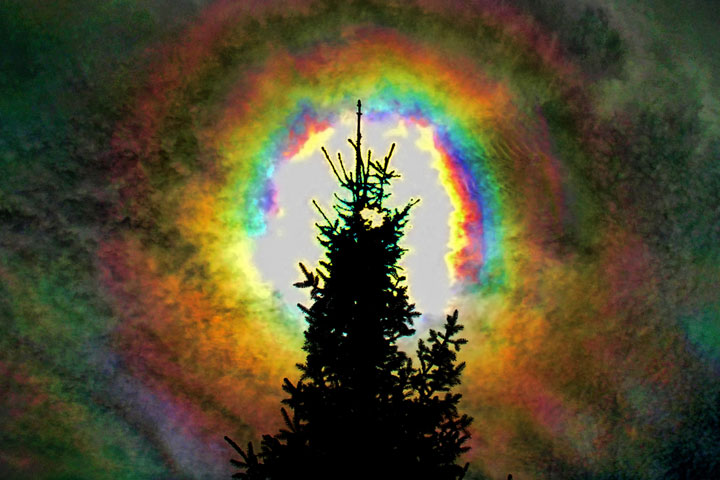
For perhaps half the year, we live within a world rich in insects. Certainly a tiny fraction of them are worth swatting, but most are innocuous, inconspicuous, and interesting. This lovely looking lassie is a cuckoo bee—she tricks others into raising her young.
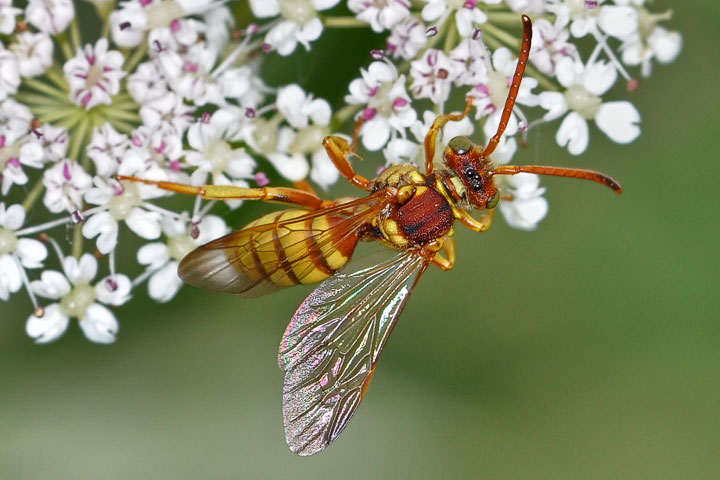
Going hand in hand with the pollinating insects of spring and summer are the wildflowers. They carpet lakeside, forest floor, and alpine meadow. Among this diversity of plants, we have quite a few species of wild orchids. Here is one that was difficult to locate: it took me four years to discover where it grows. It is the Giant Helleborine.
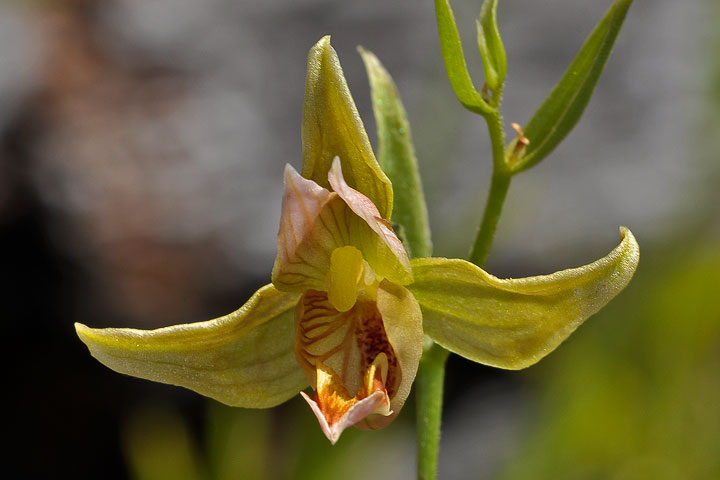
For the half of the year without bugs and flowers, we have ice: snow, frozen ponds, frost, even hail. Unexpectedly, some of this ice also looks floral. Indeed, these rather uncommon frost formations are known as an ice flowers.
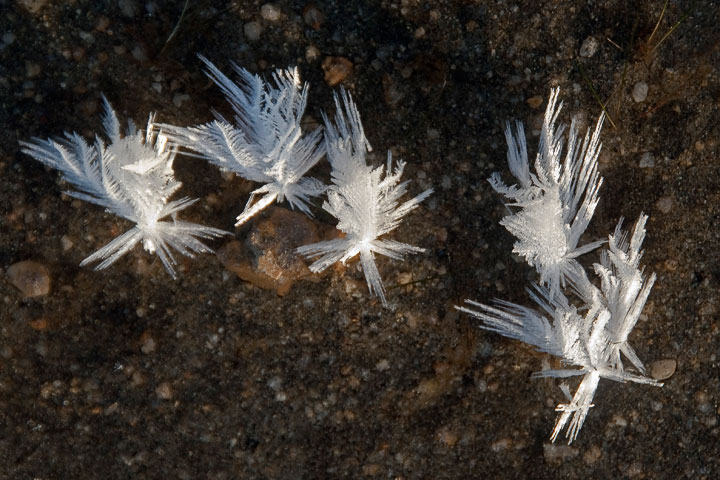
We have a rich array of mammals that wander our forests, lakes, and even our yards: bears, deer, skunks and more. Here is one that I don’t see often enough: the River Otter. Otters are in the Lake, but they only haul themselves out of the water to play, preen and defecate. This one spent about five minutes frolicking on a dock and then was gone.
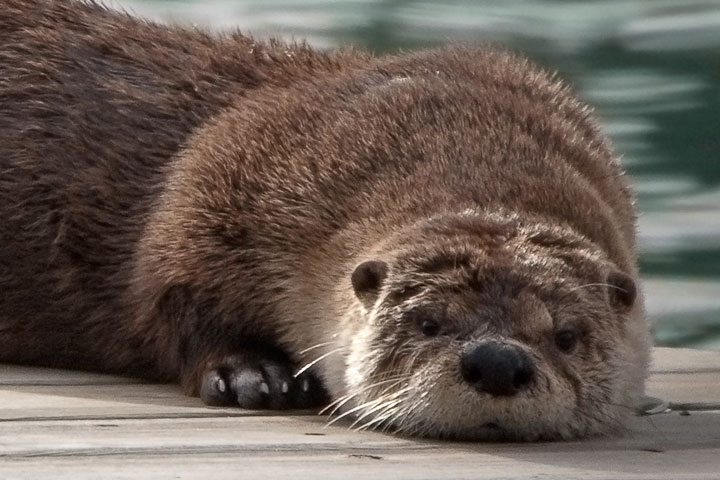
Birds abound and present a truly amazing range of species. They may live here year round, only breed here in the summer, or merely migrate through the region in the spring and fall. Who can play favourites with such a bounty? Yet, among the handful of species I will always try to photograph when seen, is the Great Blue Heron. This picture has been described as: dances on water.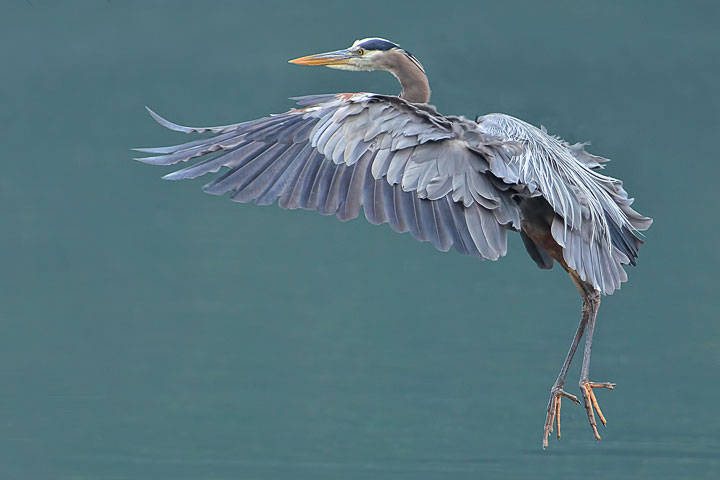
Clouds, like birds, present themselves in rich varieties: Some are common; Some are rare; Some change with the season. As with the heron, mammatus is a cloud I will take every opportunity to photograph. These gigantic pendulous pockets of precipitation form on the underside of thunderstorm anvils. They normally pass unnoticed in the darkness under the thick cloud. Yet now and then, when illuminated by the low Sun, they become downright spectacular.
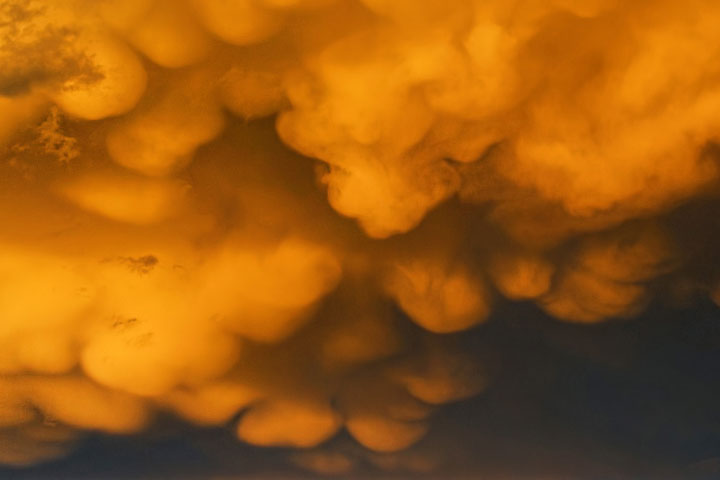
(But, why turn this information into a blog posting? It struck me that when organizers send out an e-mail reminder to potential attendees, they could merely link to this page.)

Alister, Where and when are these talks going to be. Would love to attend. Bernard
The first one is sponsored by the West Kootenay Naturalists. It is on Monday evening at 8pm in the Genelle Community Hall, 1205 2nd St, Genelle, BC V0G 1G0.
The second one is on Friday morning. It is part of a course entitled, Learning in Retirement. It is only semi opened to the public. I will write you separately about it.
Thank you for your blog postings.. I live on the coast so would not be able to attend your talks.
Mary Lou, I must admit that I too find the nine-hour drive over six mountain passes intimidating. If it were not for this, I would visit the Coast more often.
Thank you so much for giving me a taste of the talk you have prepared for the WKnats. I would love to attend, but am still in Toronto.
What a great idea to show people what the presentation is going to be like. SIMPLY FABULOUS!!!
Monday is Oct 24, not 22. The potluck and presentation is on this day and date
Margo, fixed. Thank you.
The pendulous clouds are metereogically referred to as ‘mammatus’ for obvious (wink, wink) reasons. They are heavy with moisture but held aloft by strong air currents.
David, yes, they are called mammatus (or mamma for short). However, they are not actually being held aloft by strong air currents. They are far from the updraft region of the thunderstorm as they form on the base of the anvil. These pockets of air are descending and the descent is primarily as a result of the weight of the precipitation (snow in this case).